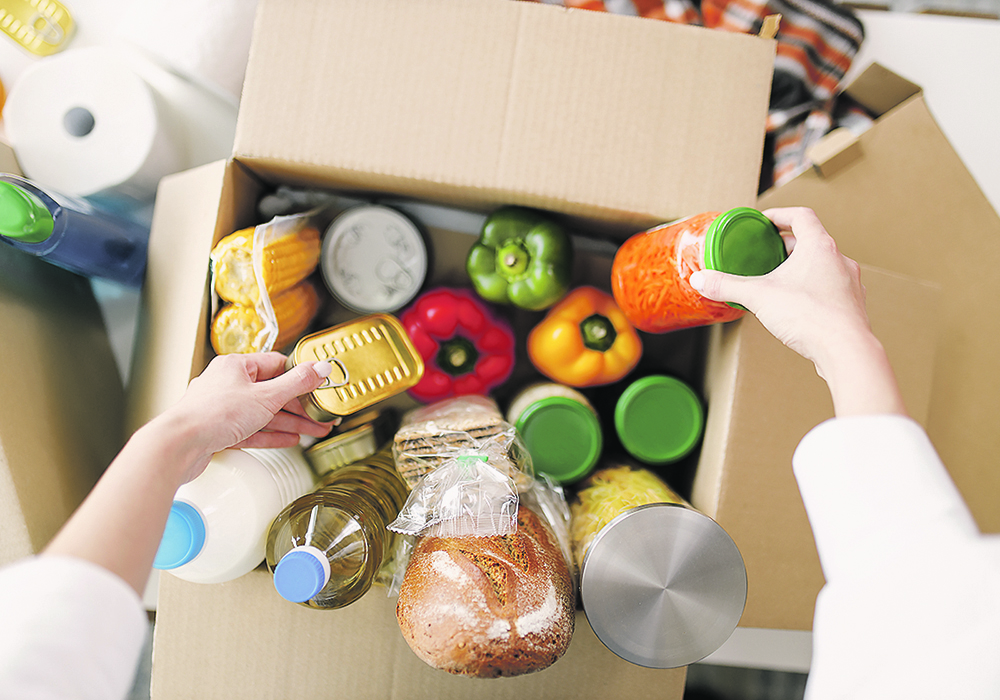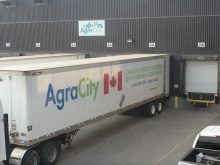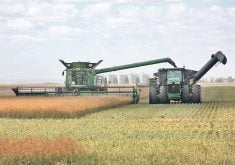Use at Saskatchewan’s 36 food banks climbed in 2022, largely because of the rising costs of food, fuel and housing
Inflation is forcing more full-time workers to food banks.
Neil Hetherington, chief executive officer of the Daily Bread Food Bank in Toronto, said the organization in Canada’s largest city used to see 65,000 people each month. During the pandemic, that boomed to 120,000.
“Today, we are now seeing 270,000 client visits per month,” he said during testimony at the standing agriculture committee’s study of food price inflation. “If there’s nothing else that you take from my testimony today, I hope you take that startling, horrific number away.”
Read Also

Trump’s tariffs take their toll on U.S. producers
U.S. farmers say Trump’s tariffs have been devastating for growers in that country.
Hetherington said typically a large proportion of the food bank’s clients are on fixed incomes. But now the number of people who are working full-time but have to use the services has risen to about one-third of the users, he said. That’s doubled in the past year.
According to Food Banks of Saskatchewan, use at the province’s 36 food banks climbed in 2022.
In Yorkton, for example, the number of families using the service climbed from 65 per month to 95.
Swift Current’s Salvation Army Food Bank has gone from 18 appointments each week in 2018 to 18 appointments each day in 2022.
Smaller services, such as Wadena, served 134 families in December 2022.
The organizations cited the rising costs of food, fuel and housing.
In Manitoba, food banks surveyed 400 clients last year and also found a changing profile of users.
“One-quarter of food bank clients are now people with jobs, a 50 percent increase in this demographic from just a year earlier,” said the Harvest Manitoba newsletter in December.
In Alberta, a report last fall found food insecurity in that province was the worst in the country.
Albertans were accessing food banks at more than double the national rate compared to pre-pandemic levels, according to Food Banks Alberta.
Ian Boxall, Saskatchewan farmer and president of the Agricultural Producers Association of Saskatchewan, told the committee that farmers recognize their critical role in contributing to food security.
“Farmers are very sensitive to the current environment affecting consumers,” he said.
But farmers, too, are facing high prices and don’t see their share of food dollars rising.
APAS is working on establishing the farmers’ share of food dollars for a variety of products.
“We want to educate the public and build a better understanding of what impacts farmers have on the price,” he said. “I expect this to be negligible given the rapid rise in food prices.”
Boxall said farmers are facing rising input costs that affect their bottom lines. In 2021, farmers spent $2.67 billion on fertilizer, accounting for 24 percent of cash operating expenses. He said since 2019, glyphosate is up 62 percent, fuel 52 percent, urea 112 percent and anhydrous ammonia 113 percent.
“These inputs are critical for food production and security at a time when the world needs Canadian agricultural products,” he said.
He reminded the committee that these are the most important aspects of policy development.
“No policy should limit, restrict or reduce food production or decrease food security,” he said.
Conservative committee members asked how the carbon tax, which is increasing again April 1 from $50 to $65 per tonne, is affecting farmers.
“The numbers show that we’re somewhere between $14,000 and $25,000 for an average farm in Saskatchewan on the carbon tax. That’s only for the stuff we can track,” said Boxall.
Some estimates have placed the cost at $150,000 for a 5,000-acre farm by the time the tax reaches $170 per tonne in 2030.
Boxall said that amount is “unfathomable,” especially when farmers aren’t being recognized for work to conserve grasslands and maintain healthy soils. But he also said the carbon tax is only one factor contributing to higher costs for producers and higher prices for consumers.
Meanwhile, Ian Lee, professor at the Sprott School of Business at Carleton University, said blaming corporate profitability for food inflation is a mistake. He said he studies audited financial statements, and grocery retailing is “a notoriously low profit-margin industry.”
He told the committee he understands the concern committee members have, but that Parliament doesn’t regulate profit margins.
“In fact retail grocery store net profit margins are unbelievably low, absolutely and relative, compared to the double digit profit margins in pharma, banking, beverages, automotive” and others, he said.
Comparative data from the Organization for Economic Co-operation and Development shows that food inflation in Canada is below average and lower than France, Germany and the United Kingdom.
“Evidence-based research from audited statements and the statistical data from (Statistics Canada) and the OECD conclusively demonstrate that the claim of greedflation, or excessive price increases by the grocery retailers, is factually without any foundation at all,” Lee said.
















